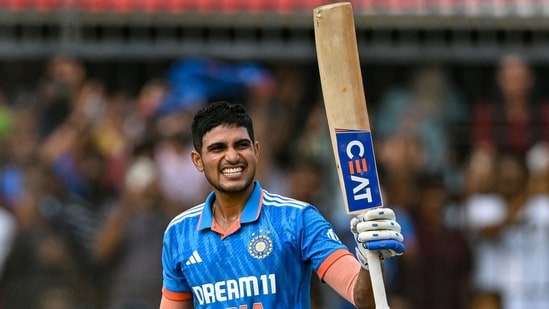Our Terms & Conditions | Our Privacy Policy
Does Shubman Gill deserve to be India’s vice-captain? Form says no but BCCI, management seem to have made up their mind
Some four decades ago, the vice-captaincy of the Australian Test team was a poisoned chalice. Andrew Hilditch, David Hookes and Ray Bright were all, at different stages and in quick succession, named Allan Border’s deputy, only to find themselves out of the Test side not long thereafter.
India vs Australia 2nd ODI Live Score: Shubman Gill pummelled a 6th century.(AFP)
That was no more than a coincidence, however. The vice-captaincy of a cricket team is at once a ceremonial post and an important position. It involves confabulating with the captain and the head coach in formulating gameplans and strategies, yet it is a position of some authority without too much responsibility. Until the skipper becomes unavailable for some reason or the other.
Logically, the vice-captain should be the captain-in-waiting, learning the ropes so that he is ready to step up whenever the incumbent bows out. It’s an unsaid succession plan, a plan that has benefitted Indian cricket immensely. Rahul Dravid was Sourav Ganguly’s deputy before becoming the skipper, Mahendra Singh Dhoni served a one-year Test apprenticeship under Anil Kumble until assuming charge when the leg-spinner retired, and Virat Kohli enjoyed the luxury of watching Dhoni go about his business from close quarters until first the Test, and then the limited-overs, leadership roles were thrust on him in 2015 and 2017 respectively.
From all indications, India are now grooming Shubman Gill for an extended leadership position, perhaps even in the near future as far as 50-over cricket is concerned. The 25-year-old right-hander is experienced enough to fulfil that role – he has already played 47 ODIs and 21 T20Is – but is also young enough to occupy that position for a while to come, form and fitness permitting, because leadership continuity is non-negotiable.
Is India ready for split captaincy?
Gill’s appointment as Rohit Sharma’s deputy for the Champions Trophy next month isn’t a bolt from the blue. Over the last seven months or so, there have been enough indications that the Prince will become the King at some stage. Gill was the captain of the T20I team that played five matches in Zimbabwe in July – India won 4-1 – after which he was made vice-captain to Suryakumar Yadav for the T20I series in Sri Lanka the same month and to Rohit for the ODI series in the same country in August.
The Punjab batter is no stranger to leadership duties. He helmed Gujarat Titans last year after prodigal son Hardik Pandya returned to Mumbai Indians, and insiders insist he has a smart, creative cricket brain though he could be a little more assertive. That will come with time. Not everyone is immediately at home in the skin of a skipper, and different individuals have different styles of functioning. India’s decision-making group believes Gill has what it takes to succeed Rohit in ODIs not long from now and that he is the man to helm their campaign in the next 50-over World Cup in the Africas in 2027. By then, possibly, the T20I captaincy too will be his; undoubtedly, the rebuilding process in that format will start after the next T20 World Cup, at home next year.
The 50-over format has been Gill’s most productive in his six-year international career. He averages 58.20, has six hundreds from 47 innings and boasts a highest of 208. His strike-rate of 101.74 is well above the industry average. In Harare, with efforts of 31, 2, 66, 58* and 13, he showed that the cares of captaincy won’t impact his returns as a batter.
But there is a rider. There is always a rider. Gill is coming off a terrible tour of Australia – that goes for most Indian batters – with just 93 runs from three Tests and five innings. His lack of runs Down Under is an extension of a worrisome pattern. Since making 91 at the Gabba in 2021, Gill’s highest outside Asia is 36. That speaks to sustained issues against the moving ball, against the bouncing ball, issues that haven’t been fixed even after four years. Perhaps there will be discussions revolving around his place in the XI when India travel to England in the summer for five years, perhaps he will find himself on the sidelines unless he pulls up his socks and works on technique and temperament. Which is why Jasprit Bumrah, and not Gill, is now the Test vice-captain.
Split captaincy isn’t a new concept in Indian cricket. Maybe when Gill does climb the ODI throne, someone else – Bumrah, Rishabh Pant, KL Rahul – might lead the Test team. But in the desert sands next month, Gill must rediscover his run-scoring mojo not so much to justify being retained as vice-captain as to reiterate the permanence of class, which he has in abundance.
Images are for reference only.Images and contents gathered automatic from google or 3rd party sources.All rights on the images and contents are with their legal original owners.



Comments are closed.